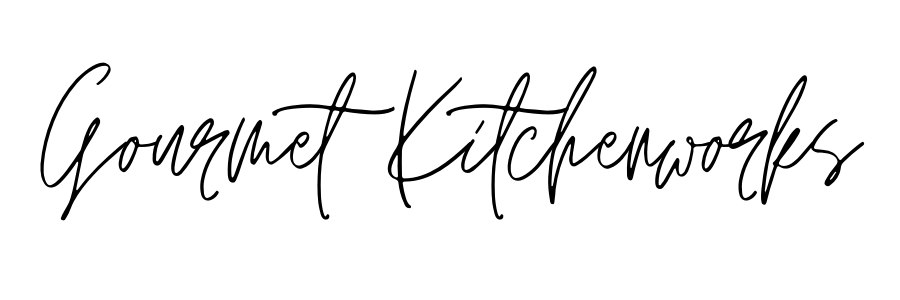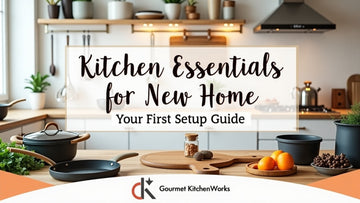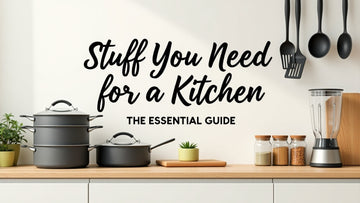How to Host a Global Cuisine Feast Using Authentic European Tools
by Michele Ekins on Aug 04, 2025

Planning to host a global cuisine feast using authentic European tools may sound niche—but it’s a flavorful way to elevate your event. These time-tested kitchen tools don’t just cook food—they carry history and craftsmanship. Imagine preparing Spanish paella in a traditional pan or slicing fine French cheeses with artisan cutlery. These tools offer precision, elegance, and heritage.
European cookware is built for versatility. Whether you’re preparing Italian pasta, Spanish tapas, or French stews, tools like a paella pan, pasta roller, or German chef’s knife enhance both the process and the result.
A global feast is more than a menu—it’s an immersive cultural experience. From decor to table settings and themed music, every element adds flavor to the evening. This guide walks you through planning, sourcing, and using authentic tools that bring European cuisine to life.
Planning Your European Menu & Theme
A well-balanced menu is key to hosting a successful European cuisine feast. Select 4–6 countries from across Europe—such as Italy, Spain, France, Greece, and Germany—to ensure variety without overwhelming yourself or your guests.
Suggested Menu Breakdown:
-
Appetizers: Tapas (Spain), Bruschetta (Italy), Cheese Platter (France)
-
Mains: Paella (Spain), Coq au Vin (France), Gnocchi (Italy)
-
Sides: Ratatouille (France), Grilled Vegetables (Mediterranean)
-
Desserts: Panna Cotta (Italy), Crème Brûlée (France), Apple Strudel (Austria)
Include vegetarian options and label dishes with ingredients for allergy awareness. You can also add a brief description or origin for each dish—this brings in storytelling and helps spark conversation.
Pro Tip: Choose recipes that allow for some prep ahead of time. Stews and baked dishes often taste better the next day, and pasta or sauces can be made in advance.
Tie the menu together with a theme like “A Taste of Southern Europe” or “Classic European Comforts.” With the help of authentic European kitchen tools, your feast will be as enjoyable to prepare as it is to eat.
Essential Authentic European Tools & Their Uses
European culinary tools combine beauty, tradition, and performance. Here are a few essentials every host should consider:
-
Paella Pan (Spain): Flat and wide, ideal for even cooking. Not just for paella—great for searing meats or slow-roasting vegetables.
-
Pasta Roller (Italy): Hand-cranked machines help you roll fresh pasta sheets for lasagna, ravioli, or tagliatelle.
-
Mortar & Pestle (Greece/Mediterranean): Used for grinding herbs and spices. Great for pesto, tapenade, or garlic spreads.
-
German or French Chef’s Knife: A high-quality stainless-steel knife handles everything from chopping vegetables to slicing meats.
-
Cast-Iron Dutch Oven (France): Perfect for slow-cooked stews like boeuf bourguignon or cassoulet. It retains heat evenly and adds depth of flavor.
-
Cheese Knife Set (France/Italy): Includes chisel, pronged knife, and spreader. Adds flair to your cheeseboard presentation.
-
Copper Saucepan (France): Ideal for preparing sauces like béchamel, hollandaise, or reductions. Heat up quickly and evenly.
These tools not only enhance performance but also add authenticity and charm to your kitchen setup.
Sourcing European Tools & Ingredients
To ensure an authentic experience, sourcing genuine tools and ingredients matters.
Where to Buy Tools:
-
Online Stores: Trusted retailers like Made In, La Tienda, and Sur La Table offer quality European-made cookware.
-
Local Specialty Shops: European delis or gourmet shops often stock artisan kitchenware.
-
Travel Finds: If you’ve traveled to Europe, tools that are purchased locally make excellent keepsakes with a story.
What to Look For:
-
Materials like cast iron, carbon steel, ceramic, or copper.
-
Labels or marks that indicate “Made in Spain,” “Made in Italy,” etc.
Where to Find Ingredients:
-
Gourmet markets like Whole Foods or Eataly
-
European specialty grocers (for cheeses, cured meats, flours, etc.)
-
Online stores for imported ingredients (e.g., Italian flour, French herbs)
Authenticity enhances both the taste and the visual appeal of your feast.
Setting the Ambiance: Décor & Tableware
The right ambiance transports your guests straight to Europe. Focus on textures, lighting, and presentation.
Décor Tips:
-
Use ceramic dinnerware, linen tablecloths, and elegant cutlery.
-
Add cultural elements: Spanish terracotta jugs, French candles, or Italian glassware.
-
Curate a background playlist with instrumental or folk music from the regions you're featuring.
Table Setup:
-
Serve family-style for warmth and sharing.
-
Add dish cards with names and origins.
-
Use mini flags or menus to reinforce the travel-inspired theme.
Every visual and sensory cue contributes to the memory of the night.
Hosting Tips: Flow, Presentation & Cultural Touches
Make the evening memorable by creating a natural flow and adding personal, cultural elements.
-
Stagger courses: Begin with small plates and drinks before bringing out mains and desserts.
-
Share dish origins: A short backstory adds meaning and encourages conversation.
-
Dress the part: Aprons or accessories inspired by the regions help set the tone.
-
Guest engagement: Offer menus or checklists so guests can “track” each country they taste.
Use rustic platters, wooden boards, and matching dishware for an elegant, cohesive table.
Conclusion
Bringing Europe to your table isn’t just about food—it’s about the warmth of shared meals, the stories behind each dish, and the joy of cooking with tools that carry tradition. With a little planning and the right essentials, your feast can become more than just a meal—it becomes a memory.
Ready to recreate the charm of European kitchens in your own home? Explore handpicked cookware and timeless culinary tools at Gourmet KitchenWorks—as great meals start with the right tools. Visit us and shop now!
FAQs (Frequently Asked Questions)
Q1: What are the must-have European tools for a global feast?
A: A paella pan, pasta roller, mortar & pestle, chef’s knife, and Dutch oven cover a wide range of European cooking styles.
Q2: Can I use European tools for any type of cooking?
A: Yes. Though they are rooted in tradition, European tools are versatile and suit a variety of cooking techniques.
Q3: How do I keep my tools in good shape?
A: Avoid using dishwasher. Instead, wash items by hand, dry them right away, season cast iron regularly, and protect knives with blade guards.
Q4: Where can I find traditional recipes?
A: Explore European recipes from cookbooks or blogs like The Food of Spain and shop tools to match at Gourmet Kitchen works.



